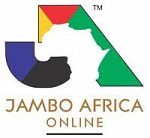By Afolabi Osho, Editor: West Africa
As Uganda prepares to chair the Global South Association, taking the reins of the Non-Aligned Movement (NAM) from 2024 to 2026, the spotlight is on President Yoweri Museveni and the Republic of Uganda. This significant role comes at a crucial juncture when Africa is experiencing economic growth through initiatives like the African Continental Free Trade Area (AfCFTA) and the Single African Air Transport Market (SAATM). This feature explores the leading role played by Uganda and its President in the NAM, the economic implications for Africa, and the strategies to harness global markets while adhering to the theme of ‘Leaving No One Behind.’
Africa’s Economic Landscape: Africa, with its 54 diverse nations, is witnessing a transformative phase in its economic landscape. The AfCFTA, initiated in 2018, has seen 53 countries, including Uganda, signing up to create the world’s largest free trade area. Similarly, the SAATM aims to liberalize air travel within the continent, fostering economic integration and connectivity. These initiatives underscore Africa’s commitment to economic cooperation and regional development.
Uganda’s Leading Role in the NAM: Uganda’s ascension to the chairmanship of the NAM is a testament to its growing influence on the global stage. The NAM, founded during the Cold War, has evolved into a forum for 120 nations, representing a diverse group of countries from Africa, Asia, Latin America, and the Caribbean. As Uganda takes on this leadership role, it positions itself as a key player in fostering cooperation and addressing global challenges.
Connecting AfCFTA and SAATM with NAM:Uganda’s participation in the NAM provides a unique opportunity to leverage its position within AfCFTAand SAATM. The NAM Summit in Kampala serves as a platform to showcase Africa’s economic potential and highlight the benefits of regional cooperation. By aligning the goals of AfCFTA and SAATM with the NAM’s theme of ‘Leaving No One Behind,’ Uganda can advocate for inclusive economic growth and development.
Strategies for Global Market Access: To maximize Africa’s economic potential, Uganda, as the NAM chair, can advocate for policies that facilitate global market access for member states. This involves promoting fair trade, addressing trade barriers, and fostering partnerships that contribute to sustainable development. Emphasizing the economic dimensions during the summit discussions will be crucial in realizing the shared vision of prosperity for all.
Economic Dimensions of NAM: The NAM’shistorical significance lies not only in its political objectives but also in its economic dimensions. As the second-largest international grouping of countries, after the United Nations, the NAM has the potential to influence global economic policies. Uganda’s leadership can advocate for policies that support economic stability, poverty eradication, and infrastructure development across member states.
Addressing Socio-Economic Challenges: The NAM Summit presents an opportunity for Uganda to address pressing socio-economic challenges faced by developing countries. Issues such as unemployment, healthcare, education, and environmental sustainability can be central themes in discussions and initiatives proposed during the summit. Uganda’s experiences, including the implementation of the Parish Development Model, can serve as a blueprint for poverty eradication and inclusive development.
In Conclusion: As Uganda assumes the chairmanship of the NAM, the country stands at the intersection of global diplomacy and economic progress. President Yoweri Museveni’s leadership provides a unique opportunity to bridge the economic aspirations of Africa, as highlighted by AfCFTA and SAATM, with the inclusive vision of the Non-Aligned Movement. By strategically connecting these initiatives, Uganda can play a pivotal role in shaping the economic future of the Global South, ensuring that no nation is left behind in the pursuit of prosperity and development.

